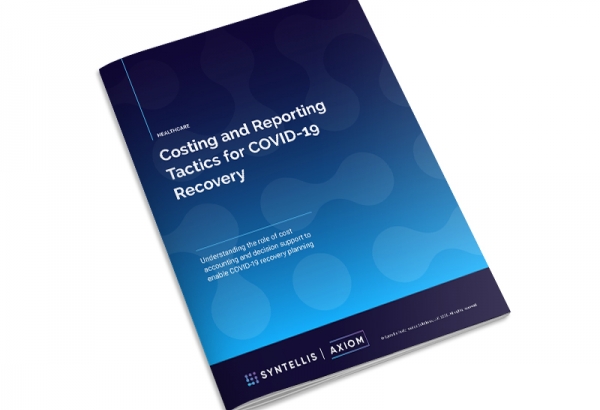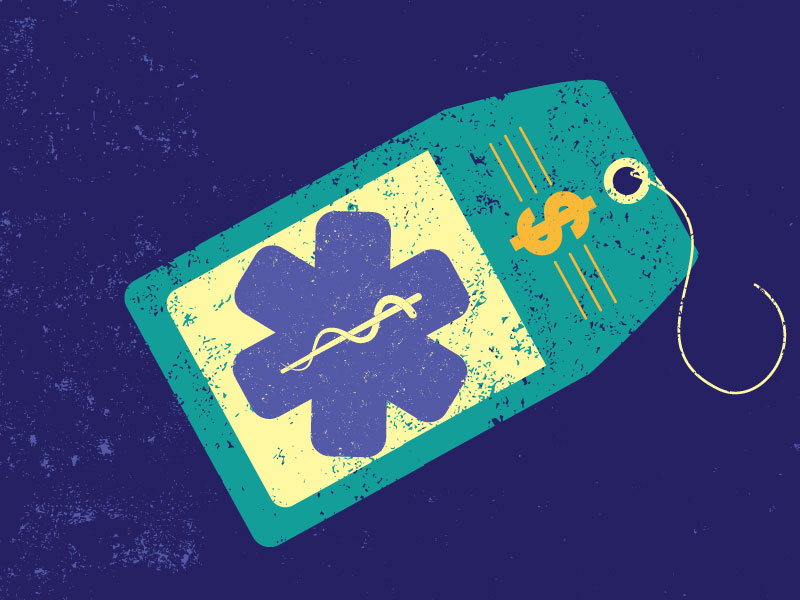To recover from the financial impacts of the COVID-19 pandemic, healthcare leaders need to effectively and accurately account for the costs associated with COVID-19 care at both the organizational and patient levels. Even as vaccine programs are rolled out, another surge remains a possibility and healthcare organizations must stay focused on their costing approach and ensuring accurate and reliable results for reporting and analytics. Decisions about how COVID-related costs are captured and assigned will impact strategic reporting for healthcare organizations.
An effective costing system enables advanced cost accounting methods to work together with traditional costing methods for efficient and highly accurate results. However, not all costing situations require advanced methods to be effective. The key is knowing when to leverage sophisticated techniques and when to rely on traditional methods.
To ensure goals are met within cost accounting, consider the following setup and reporting configurations and costing methodologies.
Setup and Reporting Configurations
COVID-19 General Ledger Data
How COVID-19 general ledger data is captured will influence how an organization accounts for COVID-19 costs in the costing model. Healthcare finance leaders can choose from many different approaches to accounting for COVID-19 in their ERP systems (GL, Payroll, AP). The way the GL costs are accounted for will impact the costing configuration decisions that must be made.
To determine the best approach for an organization’s COVID-19 costs, consider an approach that is both methodical and forward-thinking. To best account for these extraordinary administrative and patient care costs across both COVID-19 and non-COVID-19 populations, the following approach will ensure a long-term costing configuration that meets all reporting needs:
- Take an inventory of the changes made in source systems so that these modifications can be addressed within the cost model structure.
- Identify areas — such as PPE tracking or other revenue offsets — where new cost categories may be required.
- Review the clinical criteria to identify COVID-19 cases to enable the alignment of specific cost-of-care expenses to the cases, where appropriate.
- Consider the best reporting source for COVID-19 tracking and whether reporting will be sourced from the general ledger, clinical source systems, and/or service line analysis.
- Review the clinical coding and service line mappings to understand how these cases will be captured in service line reporting. Consider the impact of breaking out COVID-19 cases from the traditional service lines.
New Cost Categories
Cost categories are designed to structure how costs are mapped and reported in the cost model. New cost categories for COVID-19-specific overhead costs are recommended, as this setup will provide a mechanism to easily include or exclude these costs for reporting. By utilizing a separate COVID-19 cost category, organizations can redirect these costs to specific patient populations, allow the cost to remain as overhead for reporting, or decide to exclude from reporting altogether.
In direct patient care areas, new categories — such as COVID-specific labor and supplies — are probably unnecessary for COVID-19 tracking. These costs are associated with specific COVID-19 cases and can be reported easily and accurately. One possible exception is PPE, which organizations may choose to highlight specifically due to the significant increase during this crisis.
Addressing COVID-19 Overhead-Related Items
Even organizations with few COVID-19 cases may have additional costs related to preparing for a potential surge and increased activities to support ongoing operations — for example, employee screenings, testing, and education.
Treat these types of costs as indirect costs and allocate them as overhead. If a separate cost category is used for COVID-19 overhead, this cost can then be included, excluded, or redirected. Organizations will need this flexibility as they refine goals for reporting and how they view this overhead expense. Some organizations will want to allocate this to all cases, and some will want to ensure only COVID-19 cases receive this allocation. To some extent the goals and decisions made will depend on the number of cases and the materiality of the costs incurred.
Allocating Overhead and Calculating Cost
Overhead Allocations
Indirect department costs can be allocated to departments based on statistics using one of two overhead allocation methodologies — the traditional Single Step Down Allocation or the more advanced Reciprocal Allocation method. As an effective alternative to allocations, indirect costs can either be directly assigned to patients or reclassed to direct departments. Both of these advanced approaches result in more accurate patient costing and greater accountability for cost control.
Directly assigning indirect costs to patients requires clinical coding to identify the encounters to target. This direct-to-encounter costing approach is a highly effective way to address indirect department costs when the activity can be directly linked to patients. COVID-19 specific overhead can be assigned directly to the COVID-19 patients using this method. A direct-to-encounter approach enables an organization to treat an indirect department (one with no direct patient activity) as though it were direct (with patient activity). The cost is assigned to patients based on clinical measures through a utility that creates a pseudo activity record. This approach minimizes the overhead effect of ignoring costs that are “below the line,” ensuring that the total cost of providing patient care is recorded.
Indirect department costs can also be assigned to direct departments using the reclass process, allowing retention of the direct cost category structure. This approach is also an effective way to ensure that cost is not “lost” in the overhead allocation process. If this approach is taken, cost calculation methods are chosen to then direct the cost to patients with activity in these receiving departments. The flow of costs from indirect to direct and then to the patients is important and should be viewed holistically to ensure the most reliable outcome.
Traditional Costing Methods
In addition to how an organization treats indirect cost, there are several methods to consider for calculating the cost per unit. This decision point is, in some ways, the more critical focus when designing a costing system or responding to a major organization initiative. When selecting a cost method, consider the type of item being costed, the resources available for the cost calculation, and the accuracy desired in the results. Cost items are typically chargemaster (CDM) codes but can also be items such as CPT codes or the pseudo cost items created through the direct-to-encounter utility. Traditional costing approaches include Ratio of Cost to Charge (RCC), Relative Value Unit (RVU), and Relative Cost Unit (RCU). These methods are well-known and frequently used in the healthcare industry.
Advanced Costing Methods
There are two advanced cost calculation methods to consider as well: micro-costing and reverse markup. With micro-costing, the vendor cost can be assigned directly to the cost items or to the actual transaction level for encounters. This highly accurate approach increases transparency and buy-in. The source data from vendors is the assigned cost, and a resulting variance to the general ledger can be included or excluded from the cost process. When possible, assigning this vendor cost at the actual encounter transaction level (transaction micro-costing) is highly recommended. A data feed with the vendor cost is required to enable this method for large groups of cost items.
Using the reverse markup method, an organization can leverage its markup policy to back into the vendor cost when the vendor cost is unknown. This method is not as accurate as micro-costing but does offer efficiency since it requires less maintenance and no detailed data feeds.
Costing Considerations
Advanced costing approaches should be used where the impact is the greatest. Areas such as surgery and other high-cost services will benefit from micro-costing and markup methods. However, with the COVID-19 crisis, there was likely not a significant need for micro-costing since high-cost supplies and implants were not critical. The reverse markup method may have been more important — drugs certainly play an important role with COVID-19 patients and this method is often leveraged for drugs.
To learn more about Syntellis’ recommendations for adjusting costing structures to address changes associated with COVID-19-related business disruption, read our Costing and Reporting Tactics for COVID-19 Recovery playbook.
Everything you need for healthcare costing:

Costing and Reporting Tactics for COVID-19 Recovery

Strategic Decision Support, Part 1: Next-Generation Cost Accounting


